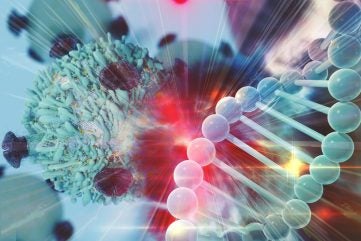
There are an estimated 300 million people worldwide who suffer from rare illnesses, with limited choices for treatment. But cell and gene therapies have the potential to transform medical treatments for those people, even providing possible cures to debilitating conditions and life-threatening illnesses where there are currently limited options.
Research is increasingly showing that such therapies can modify the body’s cells to effectively enable it to repair itself, and new, personalised treatments can even help meet the exact needs of individuals. Treatments once thought of as miraculous are now edging closer to becoming a reality for greater numbers of patients.
Last year set an annual record for cancer cell and gene therapies. The US FDA’s approval of two chimeric antigen receptor T-cell (CAR-T) therapies for blood malignancies as first-line treatments brings the total number of CAR-Ts available to patients in the US and Europe to six.
In 2019, FDA officials estimated that the agency would receive more than 200 investigational new drug applications per year for cell and gene treatments. By 2025, the FDA is expected to approve ten to 20 cell and gene therapies a year.
According to the GlobalData Pharma Intelligence Centre, the cell and gene therapy market is expected to grow at a compound annual growth rate (CAGR) of 25%-30% over the next few years, signalling an area of huge potential for the pharmaceutical and biotech industries. And for the pharma and biotech companies participating in medicines access programs for cell and gene therapy, a world of vital real-world data becomes available, offering valuable insight on how effective treatments are for patients, as well as providing the opportunity to generate revenue before regulatory approval has been granted or during the trial itself.
While real-world data on its own is not enough to secure marketing authorisation, demonstrating how a medicine works in a real-world setting, especially in orphan therapies, can strengthen any evidence submitted, potentially helping to gain approval.
Potential versus pitfall
Despite the benefits and market outlook, most businesses are reluctant or unable to invest in a single gene therapy at a time. This is frequently due to a number of hurdles in the development process. Consequently, access remains severely limited for patients.
Take the regulatory approval process, for example. For cell and gene therapies this can be complicated and variable among health agencies globally, which can affect the availability and access to innovative medicines across countries. Pre-approval for cell and gene therapy has only come to the fore in the last few years and authorisation often only exists in a handful of countries. For instance, smaller regions in Eastern Europe have lower availability of centrally approved products compared with countries such as Germany.
Currently, only a handful of health authorities have specific gene therapy regulations, with others prone to using existing guidelines for compassionate use in early access regulations. This is a template that often doesn’t fit for gene therapy. While the guidelines allow access, they don’t necessarily aid in reimbursement or the ongoing tracking of whether the product is successful over a long period.
Then there’s the issue of funding. While cell and gene therapies have the potential to cure several conditions, the technology is still in its infancy and remains prohibitively expensive. Typically, the medicines in development are high-value, niche products that are only formulated in countries where there is sufficient demand or wealth to pay for them. Payment schemes can be put into place although this process must be tightly managed, and crowdfunding has also been used to fund treatment, but it is not without risk.
According to Rebecca Bibby, general manager at leading medicines access solutions provider BAP Pharma, addressing these barriers is crucial for ensuring timely access to medicines for patients: “Niche disease groups are where these medicines can really help, but it’s often not as widely known amongst pharma companies that there are access regulations for gene therapy, as well as heavily regulated processes to help provide access to countries where products aren’t licensed.”
Streamlining access
Streamlining medicines access with the expertise of a third-party provider can help pharma and biotech companies to overcome many of these challenges. Working with both the patient and the pharmaceutical company to help address accessibility issues, a medicines access provider supports both sides of the coin, developing payment plans or confirming funding availability, overseeing document preparation and translation, navigating the regulatory bodies and negotiating for both parties to ensure access to potentially life-saving treatment for the patient.
According to Bibby: “There are a lot of nuances in the process that make it a complex environment. At BAP Pharma, we work for both sides to make sure that the product is available to those who need it, whilst also meeting regulatory requirements and managing follow-ups required by the innovator built into the project.”
BAP Pharma has a dedicated medicines access division that works to bridge the gap between patients and the companies developing these advanced medical treatments. It partners with its clients to provide bespoke medicines access programs that ensure patients can get the treatment they need, whether it is pre-license or post-MA.
“It’s impossible for pharmaceutical companies to understand the intricacies of every territory’s regulations and how they change depending on the type of product because their main focus is to manage commercial products and marketing authorisations,” says Bibby. “We manage access programs every day and have collated all that expertise in-house, so we fully understand the requirements to support our clients and HCPs.
“It is about listening, understanding, and having the knowledge to help. The main benefit is getting patients treated and that can be forgotten amid all the regulations. There is a financial element, but the part we get the biggest reward from is getting drugs to patients who have an unmet medical need.”
To learn more about overcoming challenges and maximising opportunities in medicines access, download the free whitepaper below.


